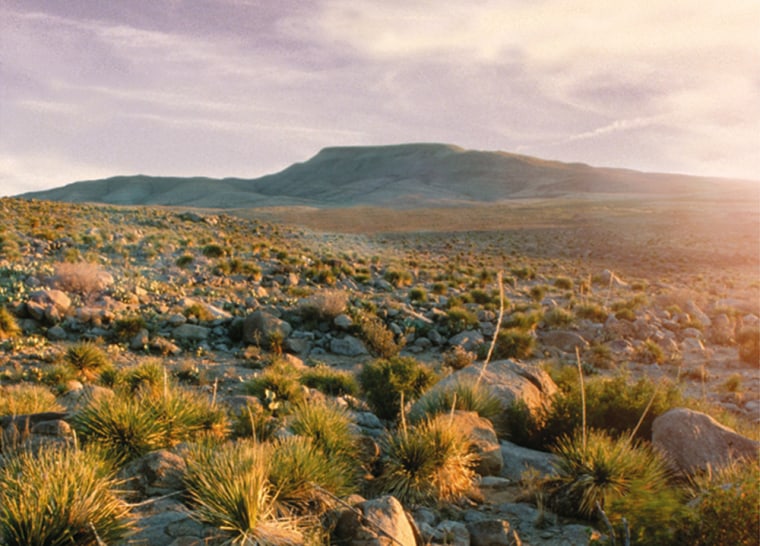The state's governor and environmentalists on Tuesday were gearing up for a court battle after the federal government moved ahead with plans to open most of a sensitive area to exploratory drilling.
The decision Monday by the Bureau of Land Management permanently protects about 124,000 acres of the roughly 2 million-acre Otero Mesa, one of North America’s largest remaining pieces of Chihuahuan desert grassland.
Gov. Bill Richardson and environmentalists, including the New Mexico Wilderness Alliance and Denver-based Earthjustice, oppose the plan and vow to battle it in court.
“The state is going to fight this with everything we’ve got,” Richardson said.
The opponents argue the plan fails to consider the effect on groundwater and grassland at the mesa, extending about 40 miles north of the Texas-New Mexico line.
Richardson — a Democrat who once called the mesa “sacred” and wanted to set aside 640,000 acres as a national conservation area — accused the federal government of ignoring its policy of working with states on major land management decisions.
“By failing to compromise, the federal government might have taken two steps backward, tying this issue up for years,” Richardson said.
Permits, pipelines and production
In 1998, a test well indicated enough natural gas reserves to justify a pipeline, and a rush on drilling permits began, prompting the BLM, which owns the land, to revise the area’s 1986 management plan. There have been thousands of public comments and two formal protests by the governor’s office.
The plan allows for only 1,589 acres of surface disturbance from well pads, roads and pipelines. At most, there will be 141 exploratory wells drilled and no more than 84 producing wells.
“It’s very methodical, very strategic,” state BLM Director Linda Rundell said. “It’s not going to be a wide-open free for all.”
Rather than having the gas and oil industry nominate lease areas, she said, the agency will carefully choose which parcels to lease. It will lease only small blocks, and then assess the environmental impact on those areas before leasing more.
BLM vows to be careful
Rundell said the plan is one of the most restrictive ever developed by the BLM and that it was designed to prevent a spiderweb of roads and pipelines from destroying the fragile grasslands, dotted with cholla cactus and yucca and grazed by antelope.
“I know that it was a big concern for the governor, ranchers and environmentalists,” she said. “They have looked at how development was done in other areas and they didn’t want to see it happen like that on Otero Mesa.”
The Bush administration has pushed for increased development on public lands across the country — notably in Alaska’s Arctic National Wildlife Refuge — and the Otero Mesa became a lightning rod during last year’s presidential campaign last year.
Sen. Pete Domenici, R-N.M., and New Mexico Land Commissioner Patrick Lyons applauded the plan, saying the BLM balanced the need to protect the environment with the need to develop new sources of oil and gas.
Jobs promised
Lyons said the plan could create 500 jobs and bring millions of dollars to Otero and Sierra counties over the next 20 years.
Stephen Capra of the New Mexico Wilderness Alliance acknowledged there were novel parts to the BLM plan, but declared: “The protection the BLM is talking about, it’s window dressing.”
“These are some of the last unfragmented desert grasslands anywhere in the world and they’re just essential to protection of numerous desert species, from the pronghorn antelope to the endangered Aplomado falcon,” said Mike Harris, an attorney with Denver-based Earthjustice.
